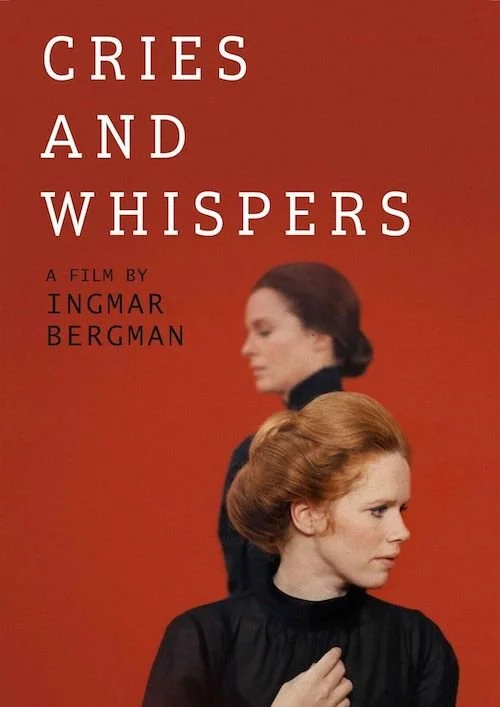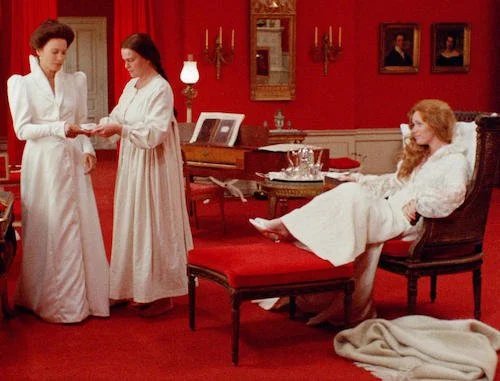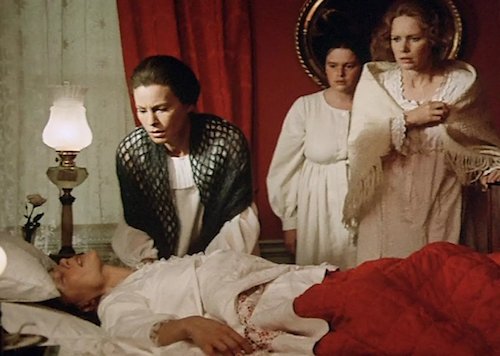Cries and Whispers
Written by Octavio Carbajal González
Swedish filmmaker, writer and producer Ingmar Bergman is undoubtedly one of the greatest artists of all time. He directed over 70 films and documentaries and also wrote 170 plays during his lifetime. Acclaimed American filmmaker Martin Scorsese once said: “If you were alive in the ’50s and the ’60s and of a certain age, a teenager on your way to becoming an adult, and you wanted to make movies, I don’t see how you couldn’t be influenced by Bergman…It’s impossible to overestimate the effect that his films had on people.”
A mysterious dream that Bergman experienced gave birth to the outstanding and terrific film Cries and Whispers (1972). The filmmaker dreamt of a red room in which four women moved and whispered in each other's ears; they were all dressed in white. According to Bergman’s book Images (1990), this dream haunted him for an entire year. In the early 70s, Bergman was still in the midst of a prolific creative period. Films like Through a Glass Darkly (1961), Winter Light (1963) and The Silence (1963), showed his most pessimistic side. Bergman’s following works- Persona (1966), Hour of the Wolf (1968) and Shame (1968), constantly underlined the effects of isolation and solitary confinement between people. Even so, Bergman always underlined that communication and contact were the only salvation for humans. Cries and Whispers departs from this premise to portray a poetic, yet raw and heartbreaking realism.
Cries and Whispers channels inner turmoil via highly effective visual and narrative storytelling.
“It's early Monday morning, and I'm in pain”, Agnes (Harriet Andersson) writes in her diary. This is the first sentence of Cries and Whispers, and it is significantly important for the whole film. In Bergman's universes, the protagonists are always in touch with sublime feelings: love, loneliness, frustration, desire. However, Cries and Whispers focuses on another fundamental feeling: pain. Bergman isn’t only focusing on Agnes' tormented soul, those first moments of the film are exposing us to a much greater pain…the insane feeling that we experience during our birth - blinded by light, scared to leave our mother’s womb. Throughout the film, we’ll witness the last days of Agnes: a woman consumed by uterine cancer. We’ll see her trembling in pain, screaming and contracting in bloodcurdling spasms. Agnes’ two sisters, Karin (Ingrid Thulin) and Maria (Liv Ullman), will be her company inside a huge and cold mansion.
Both sisters have radically different personalities; they are stuck in loveless and empty marriages – Karin is cold and distant, while Maria actively seeks romance from unsuitable lovers – specifically the family’s doctor, David (Erland Josephson). Their contrasting and extremely selfish personalities are shown in a series of vignettes, and the icy relationship is contrasted with the warmth shown towards Agnes by the maid Anna (Kari Sylwan), who often appears to be the only person who truly cares for her. The love that Anna manifests for Agnes is the only Credemptive element against the cruelty and falsehood that abounds in the immense mansion. Anna’s christian faith and warm personality will catalyze the communication and physical contact between the three sisters.
Cries and Whispers delves exclusively and intimately into female psychology, male roles are almost non-existent and portrayed as mere carnal consumers. This is the case of Joakim (Henning Moritzen) and Fredrik (Georg Årlin), the respective husbands of Maria and Karin. The role of Dr. David also falls into this same category. The fourth masculine role belongs to the figure of priest Isak (Anders Ek), who represents the loss of faith and despair inside the family. Actually, the absolute protagonist of the film is the red colour. According to Bergman’s book Images, he stated: “All my films can be thought of in terms of black and white, except for Cries and Whispers. In the screenplay, it says that red represents for me the interior of the soul. When I was a child, I imagined the soul to be a dragon, a shadow floating in the air like blue smoke—a huge winged creature, half bird, half fish. But inside the dragon, everything was red.” These words open up a wide range of possible interpretations about Bergman's intention in his extreme use of the red colour. The mansion itself could be interpreted as a metaphor for a fractured family that lives inside a bloody uterus.
Cries and Whispers uses the forced togetherness of estranged family members to focus on their unavoidable fragmentation.
The narrative structure of the film is a oneiric halo that evades any rational representation or interpretation. Bergman also includes an omniscient narrator for each of the four protagonists. This delicate narrative treatment is combined with the sublime photography of the legendary cinematographer Sven Nykvist. The flashbacks of the four protagonists are composed of memories that melt into red mosaics, accompanied by sounds that evoke cries and whispers. Through a series of close-ups, Bergman explores every detail of the characters; their true nature is determined by the exposure of their faces, not their words.
A bunch of disturbing sounds emerge from the film’s title. The “cries” are related to everything that pushes us away: pain, anguish, impotence, loneliness and guilt. In contrast, “whispers” are associated with the feelings that bring us together: tenderness, tolerance, love and compassion. Andersson, Thulin, Ullmann, and Sylwan perform with absolute and splendid brilliance. Nykvist's camerawork has never been better. Cries and Whispers ought to be experienced by everyone who believes in the mysterious dualities of life and love.
Octavio is a passionate cinema enthusiast from Mexico City, he mostly enjoys watching arthouse films from all over the globe. His reviews are published on "Vinyl Writers" (www.vinylwriters.com).








